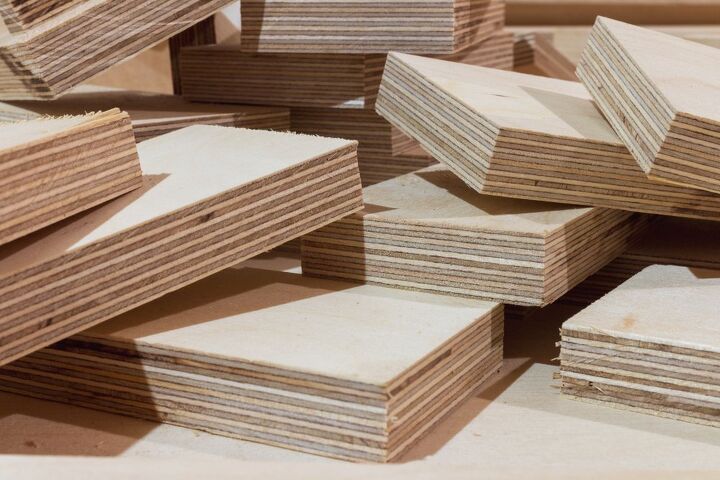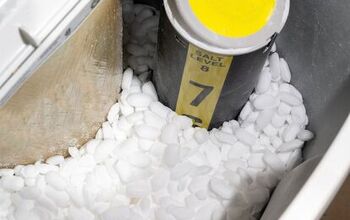Masonite Vs. Plywood: What Are The Major Differences?

When you’re working on a construction site, materials are truly everything. Two of the most commonly misunderstood materials are Masonite and plywood. Both are wood-based materials that are made from wood fiber that’s glued together. However, they are not the same and shouldn’t be treated as such. Did you ever wonder which is which, or which material is the right choice for you?
Plywood is a genre of engineered wood that is made from wood veneer sheets that are bonded then pressed together for a stronger finish. Masonite is a specific type of hardboard, or HDF (high-density fiberboard). This was first developed by William Mason. It’s primarily made of wood fiber that is glued together with resin that’s steam-cooked and pressure-molded.
Before you head to the lumber supply store, it’s important to understand where each type of wood will work best. We’ve got the guide that will help you understand each one better.
Do You Need to Hire a Framing Contractor?
Get free, zero-commitment quotes from pro contractors near you.

Before We Begin: A Brief Introduction To Masonite And Plywood
Not entirely sure what each material is? Both masonite and plywood deserve a quick blurb about them, just so that we can get caught up on the basic details of each.
What Is Masonite?
Masonite is a specialized member of the HDF family. HDF, also known as high-density fiberboard, is meant to act as an extremely sturdy alternative to hardwood or even aluminum. Masonite is primarily made of steam-cooked wood puple that is pressure-molded with resin. It’s been around for over 100 years and has a multitude of uses.
Masonite can be made in a “wet” process where only one side is smooth, or a “dry” process (both sides are smooth here!). You might’ve also heard this get called treetex,
Quartrboard, hernit, or Isorel. Most of the time, this type of wood-like fiber is used as a more affordable replacement for hardwood. There are 20 types of plywood, but none of them are quite the same as Masonite.
What Is Plywood?
Unlike Masonite, which is a specific type of fiber, plywood is an entire genre of wood-like material. This is made of thin sheets of glued-together wood veneer that’s been pressed together. You can find plywood in a wide range of different subtypes, including birch plywood and fire-rated plywood.
Most of the time, people use plywood when they want something durable, or when they want to add a little extra layering to a wall or ceiling. Fire-rated plywood is one of the safest options as a building material. It’s sturdy and can be incredibly versatile. You can paint, stain, and work with plywood to your heart’s content.
What Are The Perks And Pitfalls Of Masonite?
Masonite is a nifty material that often finds its way into use as a siding material, door material, or even as a cabinetry material. This is to be expected, though. It is a hardwood alternative.
- Masonite is known for being extremely hard and durable. This makes it a great choice for siding or doors. In the case of furniture, using Masonite means that you will be able to get heavy load-bearing without a problem.
- Masonite won’t chip or splinter. Due to the resin base, this is one way to make sure that you don’t deal with splinters now or forever.
- A drawback is that Masonite is heavy. If you need a lightweight material, this is not it.
- Masonite is also not entirely waterproof. You need to make sure to add a waterproofing coat if you want to make it work outside. Even then, there’s no guarantee you’ll have good results.
- You cannot stain Masonite. The only way to change its color is to paint it with a specialty paint.
- While Masonite is very workable, it can be hard to cut and drill through. If you want to cut through a lot of Masonite, you better stock up on extra drill bits and sharpen your blades. This material is notorious for dulling blades fast.
- You don’t have as much variety with Masonite purchases. The range of thicknesses that you can choose from is small. So is the range of colors. Not much else to say there.
How Much Does Masonite Cost?
Masonite is generally going to be the more affordable of the two products. A 4 x 8-foot sheet of Masonite will run you about $18 to $20. If you want to get Masonite siding, the prices can range from $4 to $6 per square foot for the material alone.
An Important Note About Masonite
In recent years, Masonite has fallen out of favor in the home improvement community due to the scandals involving its safety. Since 2001, Masonite has been a banned material when it comes to siding. This is because it simply doesn’t have the right properties for long-term outdoor use. When left up for too long, it will begin to swell, warp, discolor, and buckle.
The warping that happens with Masonite can lead to structural damage in certain situations. Moreover, Masonite has a nasty habit of attracting both bugs and mildew. If you wanted to use it for siding or major structural work, we would strongly suggest other stuff instead. Additionally, inhaling the dust that comes from sawing Masonite has been linked to lung and eye irritation. So, it can be dangerous.
What Are The Perks And Pitfalls Of Plywood?
As mentioned before, plywood is often used to help build up walls and ceilings. In some cases, it can also be used in the act of furniture creation.
- Plywood is durable, but not as hard as Masonite. Most people who use it choose to do so for walls or medium-weight stuff. It is not as durable as Masonite and should not be used for heavier loads.
- Unlike Masonite, plywood can splinter pretty easily. This is why most people who work with plywood have to work on finishing the edges.
- Plywood is lighter in weight than Masonite. This makes it easier to haul around.
- Stains and paints are perfectly fine with plywood. This actually is one of the reasons why so many theater companies use plywood for their sets. Plywood also has the added perk of looking like real wood even at face value. So, wood finishes look classy with it, rather than tacky.
- Plywood is easy to work with and is less likely to dull your blades. That’s why so many people consider it to be a “beginner’s material.”
- You get a lot of variety with plywood. Since it’s a whole genre, you can usually find a thickness and color that works with the project that you have in mind.
How Much Does Plywood Cost?
Honestly, this is a pretty loaded question. Plywood can run the gamut from the dirt cheap to the expensive, depending on what kind you pick. Well, okay, dirt cheap might be stretching the truth a bit. Due to the increased price of wood, plywood prices currently rest between $25 to $80 for a 4 by 8-foot sheet of plywood.
Is Plywood Dangerous?
While Masonite has been the center of several major lawsuits due to its safety, plywood doesn’t have that same stigma. Obviously, that doesn’t mean it’s totally safe. If you eat or inhale large quantities of plywood, you could probably end up having breathing problems.
Of course, more people are aware of the other issue that plywood tends to have: splinters. Plywood can splinter, and if you are very unlucky, those splinters can be large and rather painful. (Ask me how I know!) Moreover, splinters have the ugly potential of carrying infectious diseases. To avoid this, make sure to remove the splinter as soon as possible and treat the wound with an antiseptic wash.
Do You Need to Hire a Framing Contractor?
Get free, zero-commitment quotes from pro contractors near you.

Related Questions
Does Masonite contain asbestos?
While Masonite might not be the safest material out there, it’s not that bad. The patent for Masonite’s production reveals that there is no asbestos or formaldehyde involved in the creation of this material. So while it may not be the best, you don’t have to worry about asbestos-related illnesses.Abestos is generally not used in the production of building materials outside of insulation. In fact, most of the wood-based materials on the market right now do not contain anything remotely like asbestos in their makeup. So, please. Rest easy. That material is (for the most part) a thing of the past.
Can Masonite doors be planed?
Planing is often used to help keep doors level or at least make them smooth. Unfortunately, this is a woodworking method that you should never use with Masonite. Like most other MDF, plastic, and HDF materials, Masonite doesn’t plane well at all. In fact, it’s actually one of the easiest ways to break a planing saw and also potentially ruin your wood.If you want to make sure that you avoid a nasty accident in your workspace, do not attempt this. Instead, choose a better door material for your needs or work around the door.
Is Masonite waterproof?
Despite having a heavy dose of resin as part of its basic makeup, Masonite isn’t waterproof. In fact, that’s one of the biggest flaws this material has. If you want to waterproof it, the best chance you have is to apply a waterproofing sealant on top of the Masonite. Even then, your results will not last as long as other types of wood-like materials.

Ossiana Tepfenhart is an expert writer, focusing on interior design and general home tips. Writing is her life, and it's what she does best. Her interests include art and real estate investments.
More by Ossiana Tepfenhart



























